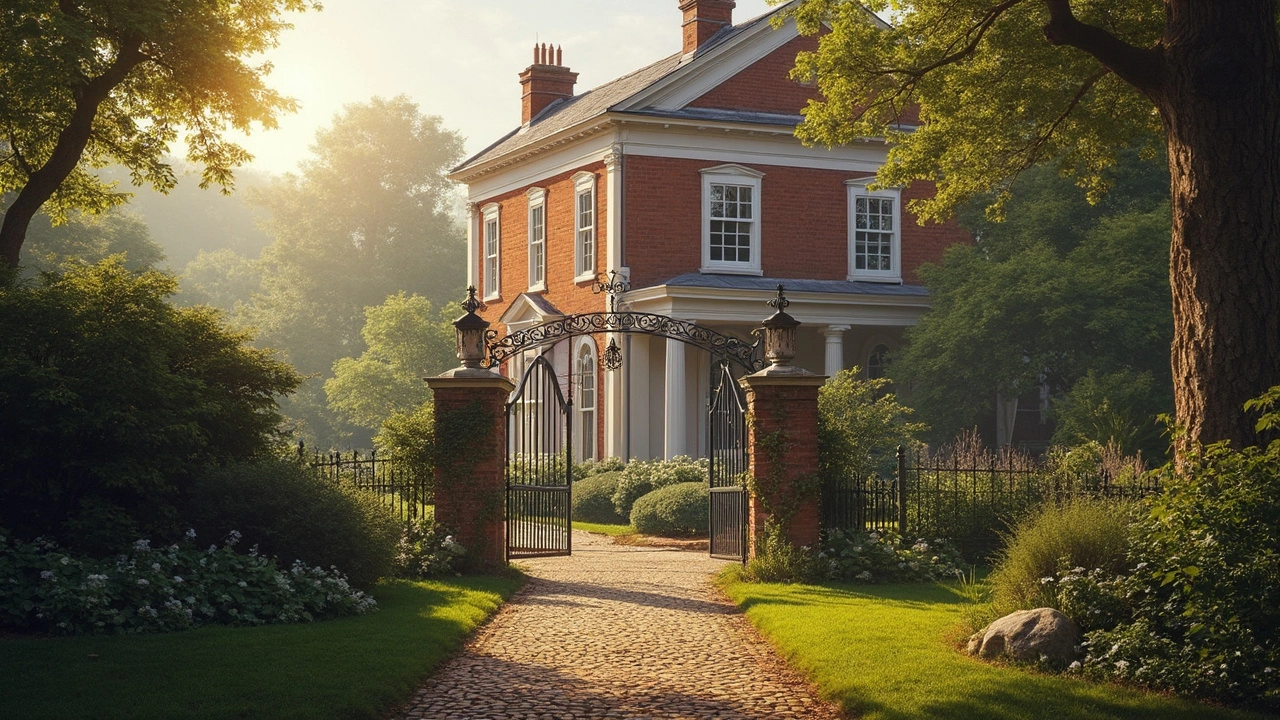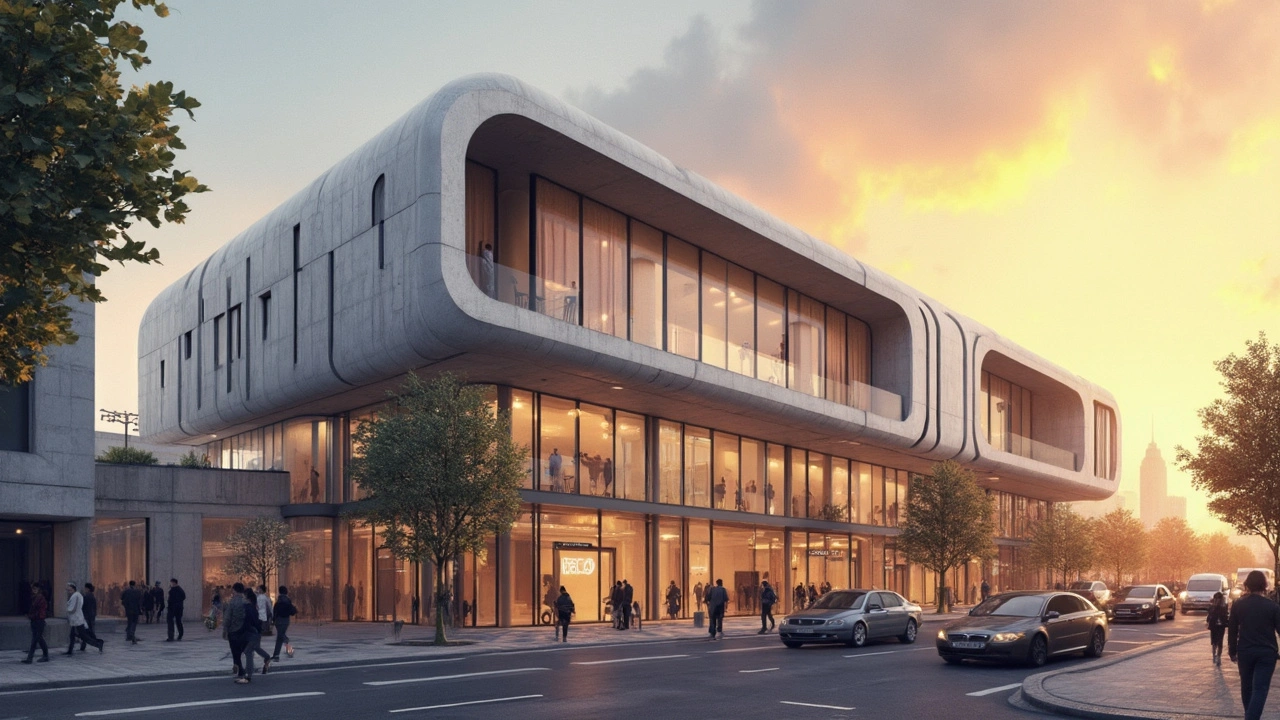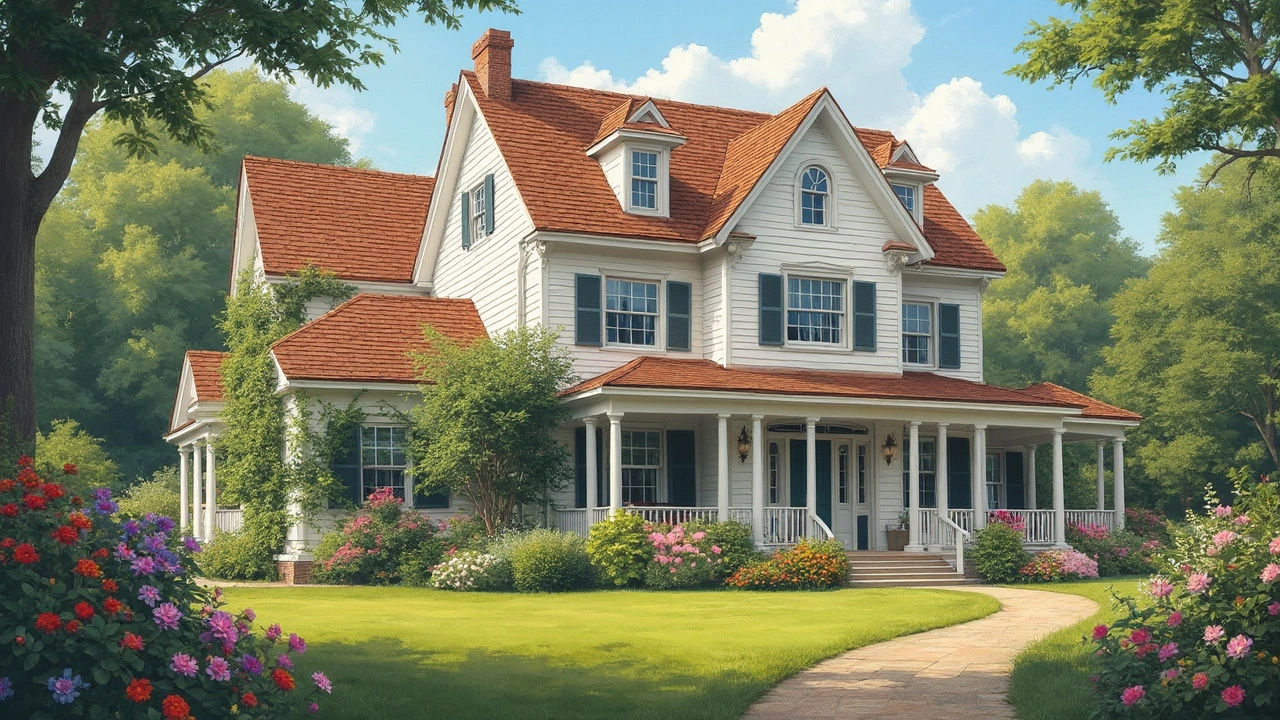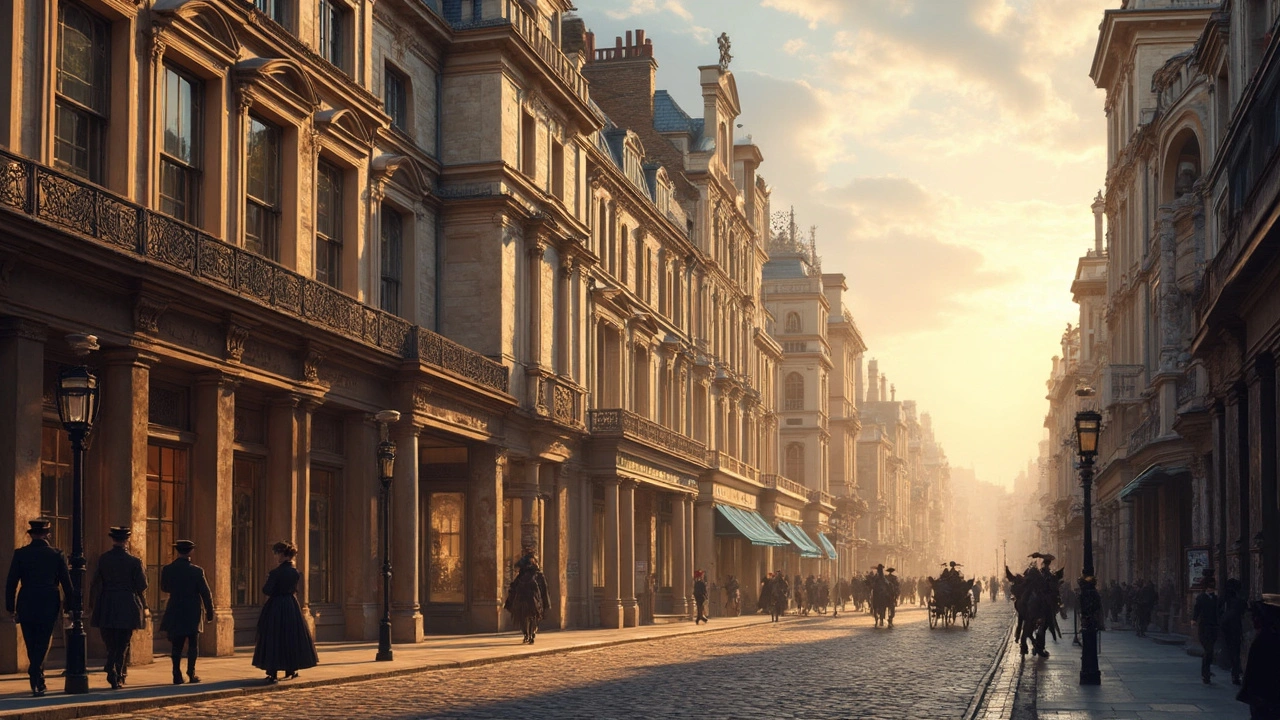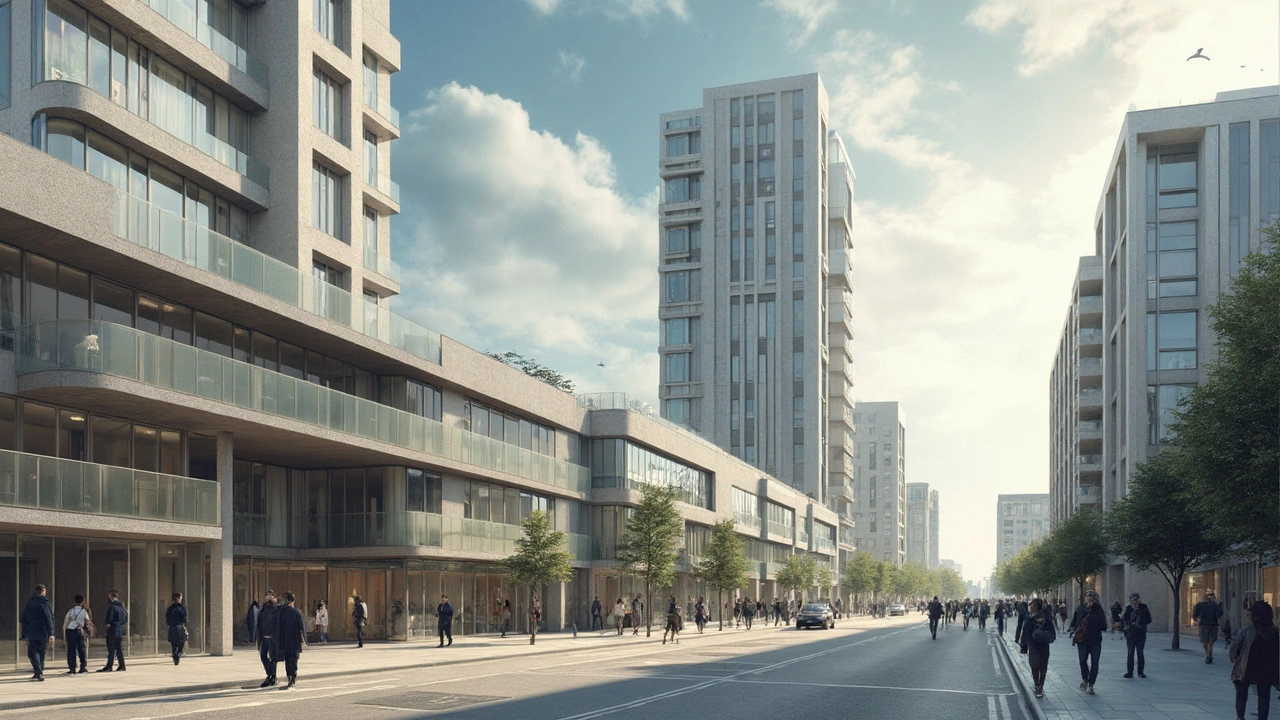Exploring the impact of postmodern architecture on urban landscapes, this article delves into the vibrant and eclectic styles that are redefining our cities. By blending elements from various architectural approaches, postmodernism challenges traditional aesthetics and encourages innovation. Urban environments are transformed into dynamic spaces, fostering creativity and community engagement. With a splash of humor and unexpected designs, postmodern architecture invites us to rethink how we live and interact with our surroundings.
February 2025 Archive — Architecture trends, styles, and practical tips
February brought a mix of history and modern thinking to Architectural Artistry Chambers. We covered postmodern shifts in city design, two looks at Colonial Revival, the clean lines of International Style, the grandeur of Renaissance buildings, the charm of Italianate homes, Bauhaus minimalism, and Gothic craftsmanship. If you're a homeowner, student, or designer, these posts give clear examples and usable ideas.
Which styles are reshaping cities? Our piece on postmodern architecture shows how playful facades and mixed materials create lively streets. You’ll see how color, unexpected forms, and public art turn bland blocks into social hubs. The article points to practical steps: use bold accents on key façades, mix program types to invite foot traffic, and commission local artists for site-specific work.
Historical roots, modern uses
Colonial Revival came up twice — once as a general overview and once focused on why it matters now. Both posts make the same strong case: symmetry, classical details, and welcoming porches still work in modern homes. For renovators, the advice is concrete: keep original window patterns, restore cornices where possible, and adapt porches for outdoor living. That preserves character while improving function.
The International Style post explains how simplicity saves money and space. Think straight lines, open plans, and large glass panels. The practical tip here is to favor flexible rooms and light-colored finishes to keep interiors bright and adaptable. Use durable, low-maintenance materials so the clean look lasts longer.
Design lessons from the past
Renaissance architecture got a focused look at how buildings expressed power through symmetry, domes, and columns. The lesson for modern projects is about proportion: even small public buildings benefit from balanced façades and clear axes. Italianate architecture showed how tall windows and decorative cornices add warmth; keep those details when restoring older homes or choosing trim for new builds.
Bauhaus and Gothic essays showed opposite routes to impact. Bauhaus pushes function-first thinking: design furniture and layouts that solve real needs. Gothic reminds us structure can inspire feeling — stained glass and vertical lines still move people in sacred and civic spaces. Both posts offer actions: prototype furniture pieces and research structural details before altering historic shells.
Read these posts if you want quick, usable guidance across styles. Each one pairs visual examples with specific steps you can try — from choosing paint accents for a postmodern façade, to restoring a Colonial porch, to laying out open-plan rooms with International Style principles. February's archive is a toolkit: pick the ideas that match your project and try one change this week.
Want to go deeper? Start with 'How Postmodern Architecture is Shaping Cities' for urban ideas, then read 'Timeless Beauty: Unveiling Colonial Revival Architecture' and 'Why Colonial Revival Architecture Matters Today' for practical restoration tips. For modernist clarity read 'Exploring the Impact of International Style on Modern Aesthetics' and 'Bauhaus Style: Revolutionizing Design and Architecture' for functional design. Pair those with the historical essays on Renaissance, Italianate, and Gothic to balance beauty and structure.
Explore the charm of Colonial Revival architecture, a timeless style that brings history to life. This article dives into its features, history, and impact, providing practical design tips along the way. Learn why this style captivates homeowners, architects, and history buffs alike. Discover how modern homes can integrate Colonial Revival elements for a classic touch. Get ready to appreciate a style that never goes out of fashion.
The concept of International Style revolutionized the world of architecture and design, promoting simplicity, functionality, and a universal approach to building aesthetics. This style discarded ornate excess, favoring clean lines and open spaces that catered to a modern sensibility. Understanding how these principles influence today's design practices shows the lasting legacy of this movement. The article dives into the origins, principles, and impact of the International Style, offering tips on how to incorporate its elements into modern design projects.
Delve into the world where architecture became a symbol of power and wealth during the Renaissance period. Explore how symmetry, domes, and columns were not just structural components, but a language of influence. This article reveals the stories of grand structures and the architects whose designs immortalized the ambitions of their patrons. Discover the rebirth of classical ideas and how they still influence modern architecture today.
Colonial Revival Architecture is more than just a nod to the past; it stands strong today with its charismatic blend of history and functionality. From symmetrical facades to charming porches, this style offers timeless aesthetics paired with modern adaptability. Whether you're renovating an existing home or designing a new one, understanding the relevance of Colonial Revival can guide your architectural decisions. This article explores reasons behind its enduring appeal and how you can incorporate its elements into modern living spaces.
Italianate architecture, inspired by the romantic villas of Renaissance Italy, found its way into homes and public buildings in the 19th century. This style boasts distinctive features such as low-pitched roofs, tall windows, and decorative cornices. It embraces both elegance and functionality, making it a popular choice in urban settings across the world. Today, homeowners seek Italianate design for its timeless elegance, blending historic charm with modern living. Learn how to recognize and incorporate this style into your own home.
The Bauhaus style redefined design and architecture in profound ways. Emerging in Germany during the early 20th century, this movement broke away from tradition, embracing functionality and simplicity. Bauhaus merged creativity with practical craftsmanship, influencing everything from furniture to urban planning. Its impact has continued to shape contemporary design, emphasizing that form should follow function.
Gothic architecture stands as one of the most remarkable styles from the medieval period, known for its tall spires, intricate sculptures, and majestic stained glass windows. This style reflects the spiritual aspirations of the time, aiming to create a divine experience for those who entered these sacred spaces. The engineering marvels like flying buttresses allowed these structures to soar to new heights, while the art within aimed to teach and inspire. Gothic architecture not only demonstrates a mastery of building techniques but also reveals much about the religious and cultural life of the Middle Ages. This exploration delves into its unique elements and the stories behind these architectural wonders.


